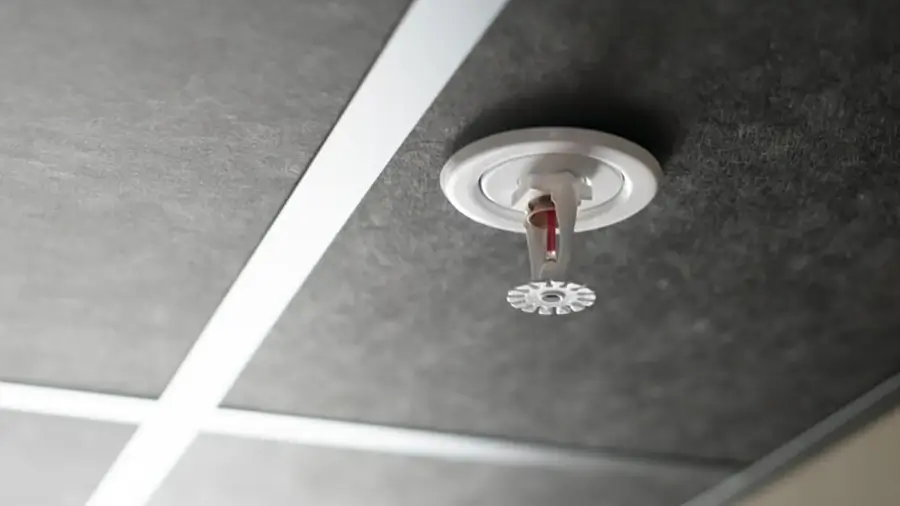What do NFPA Fire Safety Standards Cover?
Fire safety is a critical concern for any building owner or manager. The National Fire Protection Association (NFPA) has developed a comprehensive set of codes that cover every aspect of fire prevention, suppression, and emergency preparedness. These codes are essential for ensuring the safety of occupants, reducing property damage, and minimizing liability risks.
Understanding and implementing NFPA fire safety codes can seem complex, but they are crucial for maintaining compliance and protecting lives.

Key Areas Covered by NFPA Codes
The National Fire Protection Association (NFPA) develops safety standards designed to protect lives and property from fire, electrical hazards, and other emergencies. These standards serve as guidelines for building owners, facility managers, contractors, and emergency responders, ensuring that structures and systems are designed, maintained, and operated with safety in mind.
Compliance with NFPA standards is not just about meeting legal requirements—it is crucial for preventing fires, reducing risks, and ensuring the safety of occupants and first responders. Regular inspections, maintenance, and adherence to these guidelines help minimize liabilities, prevent costly damages, and save lives.
NFPA codes address nearly every aspect of fire safety, from prevention measures to emergency response. As a building owner or manager, the following areas are especially important:
1. Fire Prevention and Protection
Fire prevention is at the core of NFPA standards. Codes such as NFPA 1 (Fire Code) and NFPA 13 (Sprinkler Systems) establish requirements for fire suppression systems, alarm systems, and fire-resistant building materials. These regulations ensure that buildings are designed and maintained to minimize fire hazards and that proper fire suppression measures are in place.
Key requirements include:
- Fire sprinkler systems: Ensuring proper installation and maintenance of automatic fire sprinklers.
- Fire-resistant materials: Using construction materials that slow the spread of flames.
- Fire alarms and smoke detectors: Ensuring functional detection and notification systems for early warning.
2. Emergency Exits and Egress Requirements
During a fire, safe and rapid evacuation is critical. NFPA 101 (Life Safety Code) sets standards for emergency exits, stairwells, and signage to ensure that occupants can evacuate safely. These guidelines specify:
- Minimum number of exit routes for different building sizes.
- Proper placement and visibility of exit signs.
- Requirements for stairwells, door width, and accessibility.
3. Fire Alarm and Detection Systems
Fire alarms and early warning systems play a vital role in alerting occupants to danger. NFPA 72 (National Fire Alarm and Signaling Code) outlines the installation, testing, and maintenance of fire alarm systems, ensuring they remain functional and reliable.
Key elements include:
- Proper placement of smoke detectors and alarm panels.
- Integration of alarms with emergency communication systems.
- Routine testing and maintenance requirements.
4. Fire Suppression Systems
Beyond sprinkler systems, NFPA codes also cover specialized fire suppression technologies for different environments. NFPA 17 (Dry Chemical Extinguishing Systems) and NFPA 2001 (Clean Agent Fire Extinguishing Systems) provide guidance on systems designed for electrical rooms, commercial kitchens, and data centers.
Building owners should ensure their suppression systems are:
- Suitable for the type of fire risks present in their building.
- Regularly inspected and maintained.
- Installed according to NFPA standards for effectiveness.
5. Electrical Fire Safety
Electrical malfunctions are a leading cause of fire incidents. NFPA 70 (National Electrical Code) and NFPA 75 (Fire Protection for IT Equipment) outline guidelines to prevent electrical fires by ensuring proper installation, grounding, and circuit protection.
Best practices include:
- Regular inspection of electrical wiring and circuit panels.
- Use of surge protection and fault detection devices.
- Proper maintenance of electrical equipment in commercial and residential buildings.
6. Firefighter Access and Safety
Ensuring firefighter access to buildings is essential for effective fire response. NFPA 241 (Construction and Demolition Fire Safety) and NFPA 1710 (Organization and Deployment of Fire Suppression Operations) provide guidelines to help first responders navigate buildings safely and efficiently.
Key requirements include:
- Properly marked fire department connections (FDCs).
- Clear access routes for fire trucks and emergency personnel.
- Designated fire lanes and hydrant placement.
Why Fire Safety Inspections Matter
Fire safety compliance isn’t just about following codes—it’s about preventing disasters. Routine fire safety inspections ensure that systems are working properly and that a building remains compliant with NFPA regulations.
1. Preventing Loss of Life and Property
Fires can spread quickly, causing devastating damage to buildings and endangering lives. Regular inspections identify potential hazards before they become life-threatening emergencies.
2. Reducing Legal and Financial Liability
Building owners and managers are responsible for ensuring fire safety compliance. If a fire occurs due to negligence, lawsuits, insurance claims, and penalties can be severe. Staying compliant with NFPA codes helps reduce liability.
3. Ensuring Fire Systems Are Operational
Fire alarms, sprinklers, and extinguishers must be tested and maintained regularly to function properly in an emergency. Inspections ensure these systems remain reliable and effective.
4. Avoiding Costly Repairs and Fines
Non-compliance can result in fines, citations, or even business closure. Proactively addressing fire safety issues can prevent expensive corrective actions.
Partnering for Safety
Understanding and implementing NFPA codes can seem overwhelming, especially if you’re not an expert in building safety. That’s why partnering with knowledgeable professionals is essential.
At Elves Co., we specialize in life safety solutions that adhere to the highest industry standards, including NFPA codes and regulations. Our team is committed to helping building owners and managers like you ensure compliance, protect occupants, and maintain safe environments. Contact us today to learn how we can support your safety needs and help your building stay prepared for any emergency.
Ready to Get Started?
Contact Elves Co. today for a free consultation. Let’s discuss how we can partner with you to create a safer, more efficient, and compliant environment.
